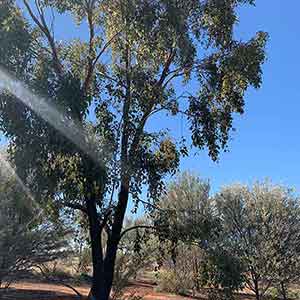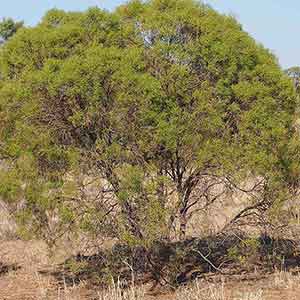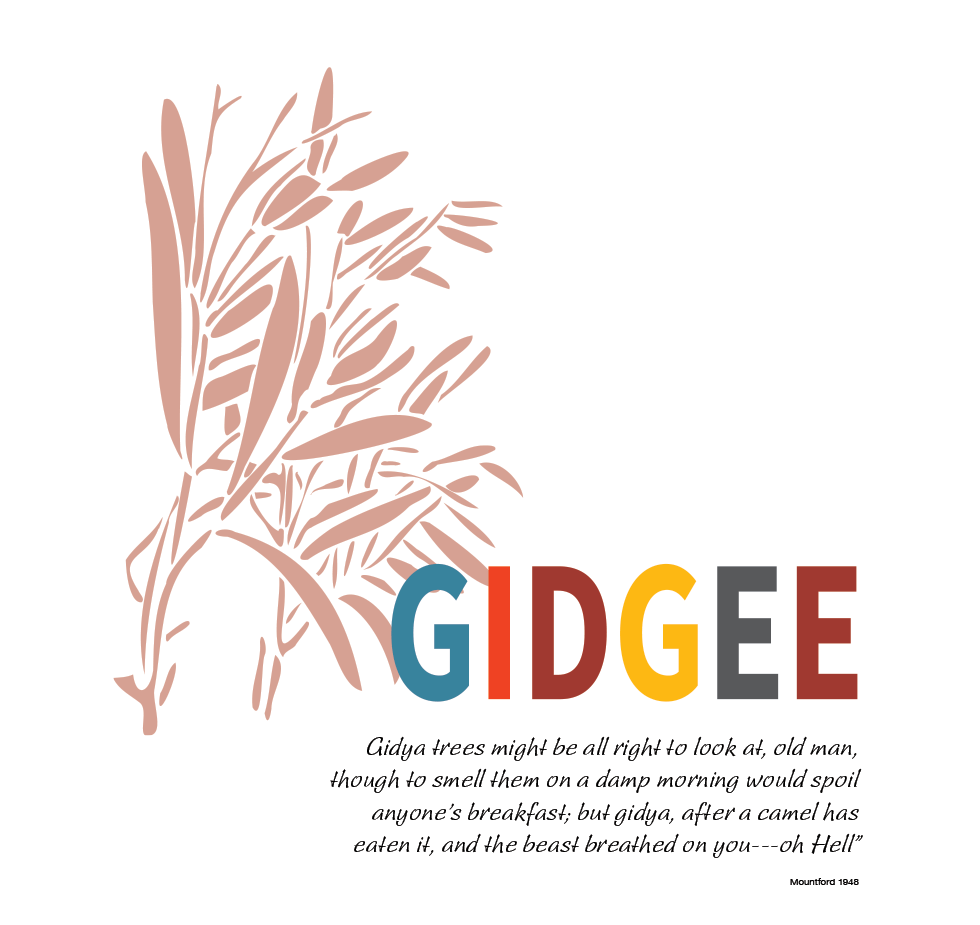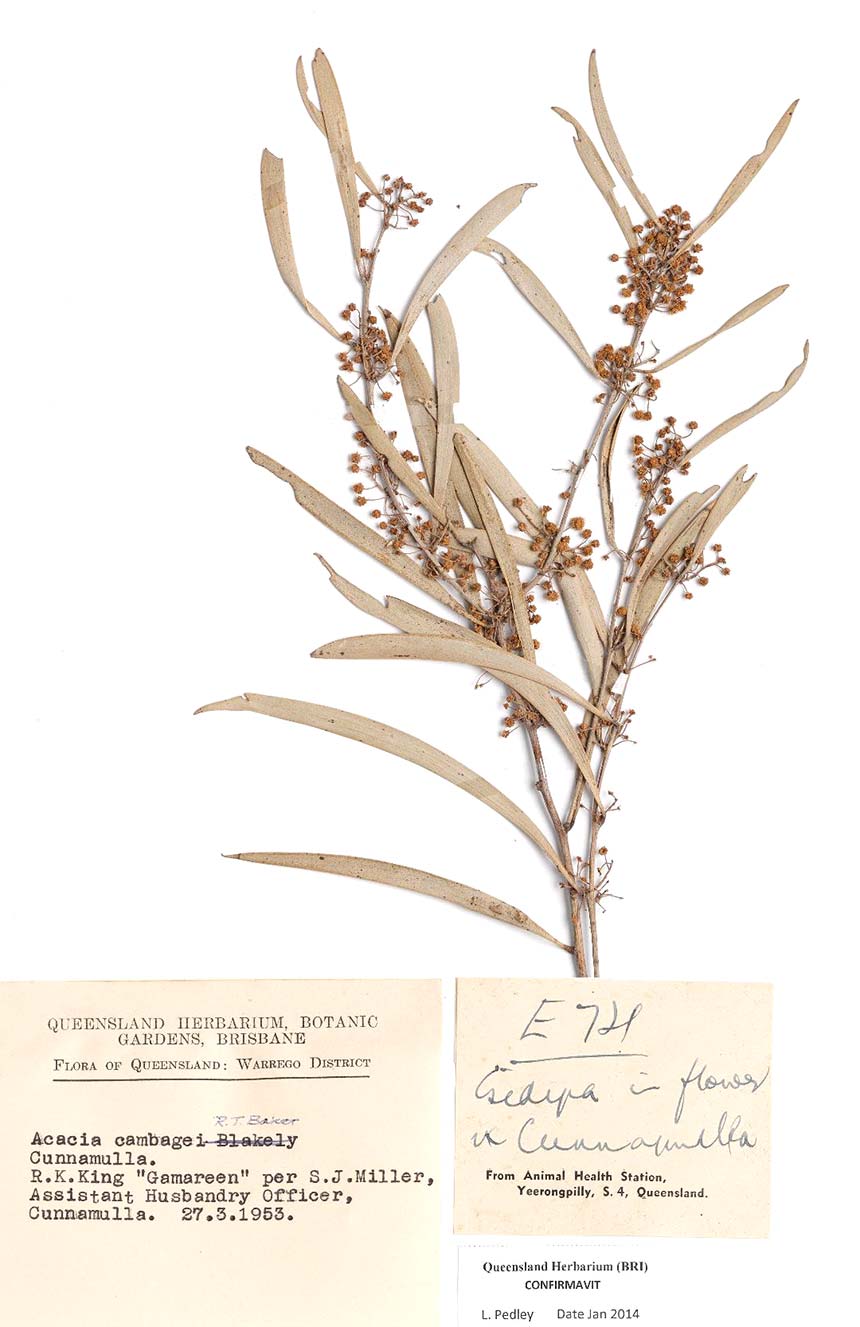... one of the outback's best know plants
Gidgee (Acacia cambagei) has made a name for itself in bush folklore as the Stinking Wattle – a plant whose leaves, bark, and litter that produce in wet weather a characteristic odour that variously has reminded people of boiled cabbage, gas or sewage.
For us though gidgee is of much more interest than its capacity to challenge our nostrils. Rather gidgee is a wonderful marker species – a feature canopy plant that stands above and defines the community of plants that grow around it.
This position as a dominant canopy plant also served to make gidgee especially useful as a wood resource for both traditional Aboriginal usage and pastoralists alike. Noted as being both the third hardest wood in the world and also a timber of exceptional beauty, the real challenge lay in having skill and patience to put gidgee timber to practical use.
... the story of the soils
Gidgee is fussy about where it grows. It likes flat areas with red clay soils, preferrably with a bit of sand mixed in for good merasure.
In this it is much like the well known brigalow that dominates across so much of central Queensland and the two plants commonly overlap here around the Warrego catchment.
Here they are commonly found growing amongst other companion plants including poplar box, false sandalwood and wilga.
To get a sense of where gidgee communities are liekly to be found in this local area we can look today at a very interesting soil map compiled as part of a PhD project back in the early 1960s.
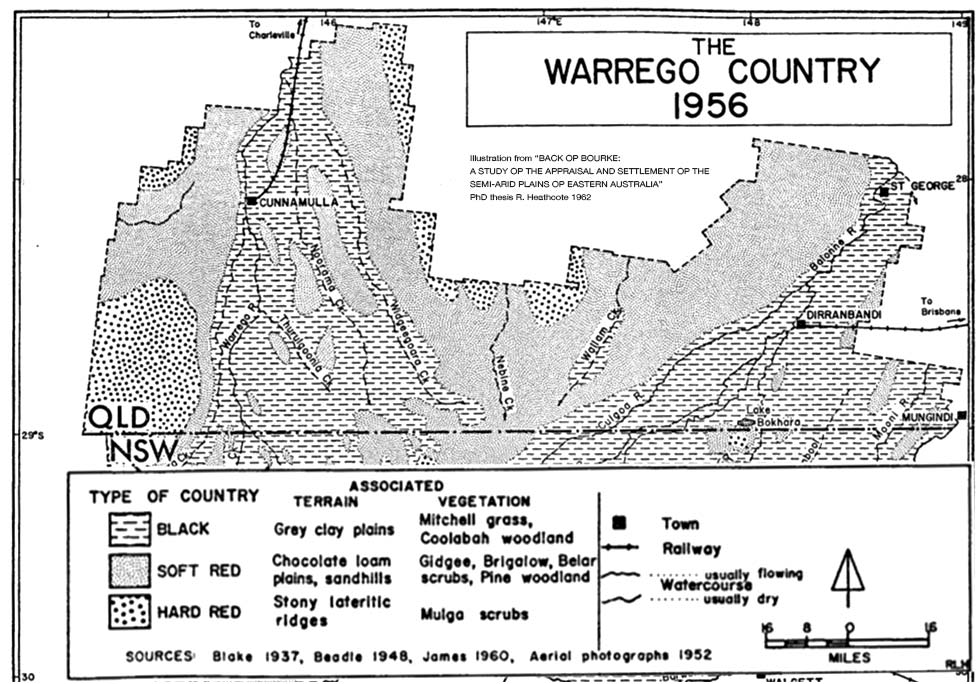
This is interesting as it uses soil names in common usage such as blacksoil, soft red and hard red soil rather than more specific technical soil type labels.
When we look at this map here it shows how the blacksoils and soft red soils suitable for gidgee communtiy growth occur mostly to the east of the Warrego River.
Across to the west is the hard red soil country of the Paroo. This is much tougher country better suited to mulga than the somewhat fussier growing habits of gidgee communities.
companion species
Unlike mulga that tends to crowd out other woody plants growing around it if it gets the chance, Gidgee country supports a variety of woody species. Look out especially for poplar box (plant 5), false sandalwood (plant 9) and wilga (plant 11).
